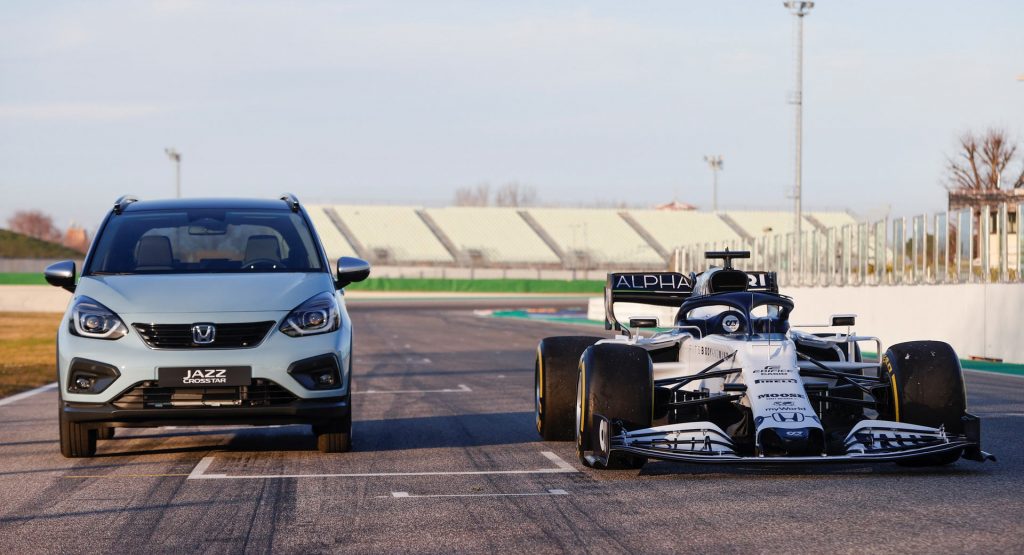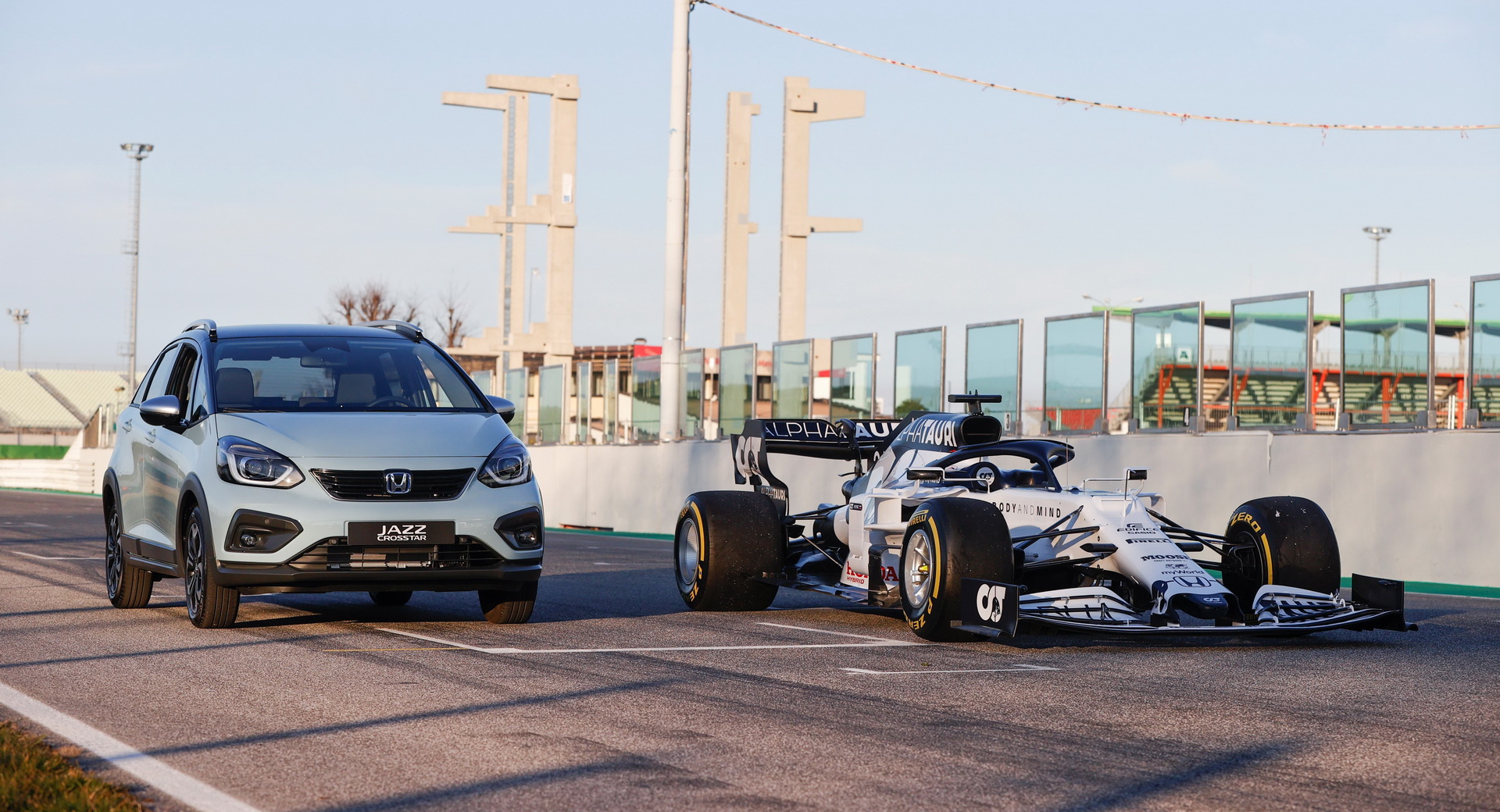There are a few parallels to be drawn between the all-new Honda Jazz and the Honda-powered Red Bull or AlphaTauri F1 cars. For example, they all have four wheels, and do their best work on dry stretches of asphalt.
On a more serious note, while trying to improve the efficiency of its e:HEV passenger car hybrid system, the Japanese carmaker actually looked at its F1 Hybrid Power Unit program for inspiration.
The all-new Honda Jazz is only the latest road-going vehicle to benefit from this technology. Its e:HEV hybrid system recycles energy and charges the battery in support of engine output very efficiently – which is how the F1 drive unit operates.
Read Also: Europe’s 2020 Honda Jazz Packs 107 HP Hybrid System, Returns 4.5 L/100 Km
“During a Formula 1 race weekend teams have to manage very carefully how much fuel they use to comply with the sport’s regulations. In a race we can divide the total fuel allowance over the number of laps, but there are going to be situations where a team might wish to use more fuel in order to get higher performance and in other parts of the race they will want to save fuel for later, while behind a safety car for example,” said Honda’s head of power unit development, Yasuaki Asaki.
“In a race, the communication between the race engineer and the driver is key to achieving that best balance. However, in our road-going e:HEV hybrids we apply our expertise to ensure the Powertrain control units deliver the best possible power to efficiency ratio for the driver, in any required driving mode.”
The Jazz’s e:HEV system consists of two compact electric motors, working alongside a 1.5-liter i-VTEC gasoline engine, a lithium-ion battery and a fixed-gear transmission. Total output of the e:HEV system stands at 109 PS (107 HP / 80 kW), with an instantly-available electric torque of 253 Nm (187 lb-ft). According to Honda, it does the 0-100 km/h (0-62 mph) in 9.4 seconds offering a top speed of 174 km/h (108 mph).
In order to deliver as rewarding a driving experience as possible, Honda focused on getting the e:HEV hybrid setup to seamlessly select from its three interchangeable drive modes: EV Drive, Hybrid Drive and Engine Drive. In most urban scenarios, optimum efficiency is achieved through seamless transitions between EV Drive and Hybrid Drive.
On the highway, Engine drive is used, supplemented by an on-demand peak power ‘boost’ from the electric motor. Meanwhile, in Hybrid Drive, excess power from the gasoline unit can be diverted to recharge the battery via the generator motor. As for EV Drive, it also engages when the car decelerates in order to harvest energy through regenerative braking.







